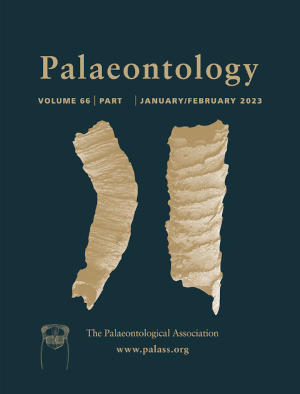Article: Lasanius, an exceptionally preserved Silurian jawless fish from Scotland
Publication: Palaeontology
Volume:
66
Part:
2
Publication Date:
2023
Article number:
e12643
Author(s):
Jane C. Reeves, Roy A. Wogelius, Joseph N. Keating, and Robert S. Sansom
Abstract
Abstract The fossil record of non-biomineralizing, soft-bodied taxa is our only direct evidence of the early history of vertebrates. A robust reconstruction of the affinities of these taxa is critical to unlocking vertebrate origins and understanding the evolution of skeletal tissues, but these taxa invariably have unstable and poorly supported phylogenetic positions. At the cusp between mineralized bony vertebrates and entirely soft-bodied vertebrates is the enigmatic Lasanius, a purported anaspid from the Silurian of Scotland. Interpretations of its affinity and significance are conflicted, principally because of its poorly understood anatomy due to taphonomic distortion and loss of soft-tissues. Here we use an array of modern techniques to reassess the anatomy of Lasanius via a comprehensive study of 229 complete and partial specimens. A new reconstruction clarifies the identity and position of preserved features, including paired sensory organs, a notochord, and digestive tract, supporting the vertebrate affinities of this genus. SEM-EDS trace element mapping suggests a bone-like composition of mineralized parts, but finds no evidence for mineralized dermal armour. Phylogenetic analysis recovers Lasanius as an early stem-cyclostome, and subsequent analysis supports the rejection of alternative placements (such as stem-gnathostome). We highlight that while distinguishing between the early cyclostome and gnathostome condition is problematic, increasing confidence in the anatomy of key taxa, such as Lasanius, is vital for increased stability throughout the early vertebrate tree.
